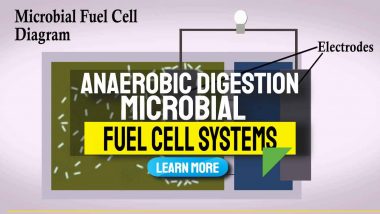Oil company Shell has entered the US biogas industry and is producing biomethane (where biogas is upgraded to biomethane and renewable compressed natural gas) at its first US AD facility.
Now the anaerobic digestion industry has now truly gone mainstream!
The Shell subsidiary company New Energies Junction City in Oregon is using locally sourced cow manure and excess agricultural residues to operate a new biogas facility. This is their first biomethane plant and it's in the United States.
It has successfully generated renewable natural gas from cow dung and agricultural leftovers, paving the way for the manufacture of low-carbon renewable compressed natural gas as a fuel for heavy-duty on-road vehicles.
If ever there was a moment when you were to feel that the AD industry had just moved up a level in global recognition, this must surely be it?
A truly global dinosaur of a fossil fuel company just jumped ship to renewable methane!

Read on to find out the details behind this news:
Shell Starts Production at Shell New Energies Junction City, its First US Renewable Natural Gas Facility
Junction City, Oregon — Shell Oil Products US, a subsidiary of Royal Dutch Shell Plc, has successfully:
- commissioned a new anaerobic digestion plant and
- produced renewable natural gas (RNG) at its first biomethane plant in the United States, in Junction City in Oregon.
The plant will generate 736,000 MMBtu of RNG per year using locally obtained cow dung and agricultural wastes. This achievement is part of a growing Shell portfolio of RNG production and distribution assets. It will be aimed at promoting low-carbon renewable compressed natural gas (R-CNG) as a fuel for heavy-duty on-road vehicles (HGVs).
“Biomethane has a significant role to play in the energy transition, and this achievement advances our strategy as we work to reduce emissions from the fuels and other energy products we sell,”
said Carlos Maurer, Executive Vice President Sectors and Decarbonization at Shell.
“We are excited to offer renewable compressed natural gas as a low-carbon fuel choice for our customers.”
Shell is constructing more new RNG manufacturing facilities that will be built right next to operating dairies.
Growing a Biofuels/ Shell Biogas Facilities Portfolio
This growing biofuels portfolio, which uses cow dung as feedstock, includes Shell Downstream Galloway at the High Plains Ponderosa Dairy in Plains, Kansas, and Shell Downstream Bovarius at the Bettencourt Dairies in Wendell, Idaho.
These two dairy RNG plants can create 900,000 MMBtu of negative carbon intensity RNG per year when combined.
Fuel Stations to Benefit
Shell R-CNG fueling stations planned at the company's product distribution complexes in Signal Hill, Carson, Van Nuys, and San Jose, California, as well as a terminal owned by Shell Midstream Partners L.P. in Portland, Oregon.
All these stations are expected to benefit from production from Shell New Energies Junction City, Shell Downstream Galloway, and Shell Downstream Bovarius.
When compared to traditional diesel fuel, R-CNG is an appealing option for fleets looking to reduce their carbon footprint.
By providing consumers with 100% R-CNG, these fuelling stations will be able to significantly reduce the carbon footprint of product movements out of their depots.
PR Ends
Shell Downstream Bovarius, Biomethane Facility (Wendell, Idaho)
As part of the Bettencourt dairies near Wendell, Idaho, Shell is building a dairy-manure-to-renewable natural gas (rng) complex. If all goes according to plan, Shell downstream Bovarius will use dairy cow dung to generate around 400,000 MMBtu of rng with a negative carbon intensity per year. It may easily be used in natural gas vehicles since rng, or biomethane is entirely interchangeable with ordinary natural gas.
Carson Renewable Compressed Natural Gas Fueling Site (Carson, California)
At its products distribution centre in Carson, California, Shell aims to build, own, and manage the country's first renewable compressed natural gas (r-CNG) fueling station. Shell's anaerobic digestion projects, including shell new energies junction city, shell downstream galloway, and shell downstream Bovarius, will provide the r-CNG.
Shell will be able to significantly decarbonize its product movements out of the terminal by offering 100% r-CNG for its contracted hauling business, Thompson and Harvey Bay region, pending required regulatory clearances.
Fleets Increasingly Turning to Natural Gas Vehicles
According to CNGVP, real-world fleets are increasingly turning to near-zero emission natural gas vehicles and carbon-negative renewable natural gas.
While several manufacturers provide factory-built natural gas trucks, step-vans, transit buses, and school buses, consumers looking for light-duty automobiles, vans, and pickup trucks have fewer alternatives – but the market is beginning to shift. The Civic, unsurprisingly, is in high demand. CNG versions of the Chevrolet Silverado 2500, Dodge Ram 2500 CNG, and Ford F-250 pickups, as well as Chevy Savana vans and Ford Transit and Transit Connect vans, have hit the market. More choices will be available shortly.
CNG cars emit less pollution. Compressed natural gas decreases carbon-monoxide emissions by 90% to 97%t and nitrogen-oxide emissions by 35% to 60 % when compared to gasoline.
A natural gas vehicle (NGV) is a vehicle that runs on compressed natural gas (CNG) or liquefied natural gas (LNG) (LNG). Natural gas cars should not be confused with autogas vehicles that run on liquefied petroleum gas (LPG), primarily propane, a fuel with a fundamentally different composition.
Shell Biogas Converted to Biomethane as Renewable Compressed Natural Gas (r-CNG)
In a natural-gas-powered vehicle, energy is released by internal combustion engine combustion of mainly methane gas (CH4) fuel with oxygen (O2) from the air to carbon dioxide (CO2) and water vapour (H2O).
Methane is the cleanest burning hydrocarbon, and many impurities found in natural gas are eliminated at the point of production.
Existing gasoline-powered cars, vans and trucks can be converted to run on compressed natural gas (CNG) or LNG. These can be dedicated (only operating on natural gas) or bi-fuel (running on either gasoline or natural gas).
It is also feasible to generate energy in a tiny gas turbine and pair it with a small electric battery to form a hybrid electric-motor-driven car.


